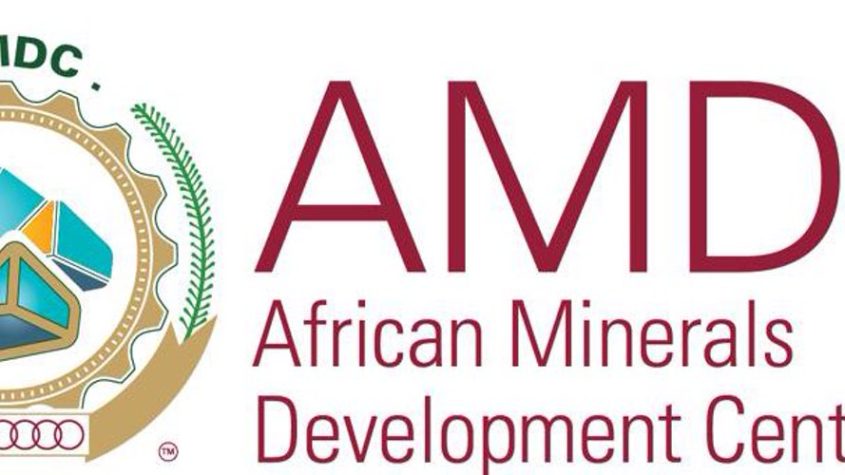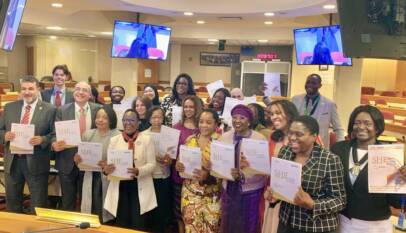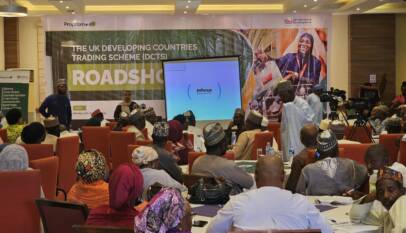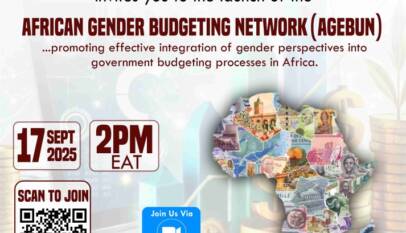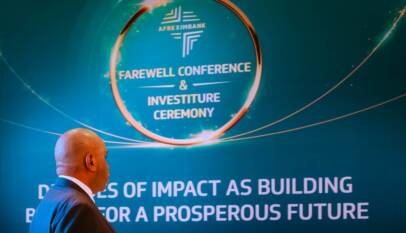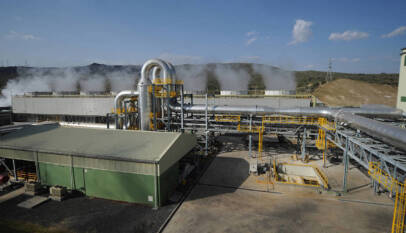INTERVIEW | “How We’re Coordinating Implementation of Africa Mining Vision” – AMDC
Mr Mkhululi Ncube is the Programmes Manager at the African Minerals Development Centre (AMDC), a specialised agency of the African Union mandated to work with Member States to promote the transformative role of mineral resources in Africa’s development.
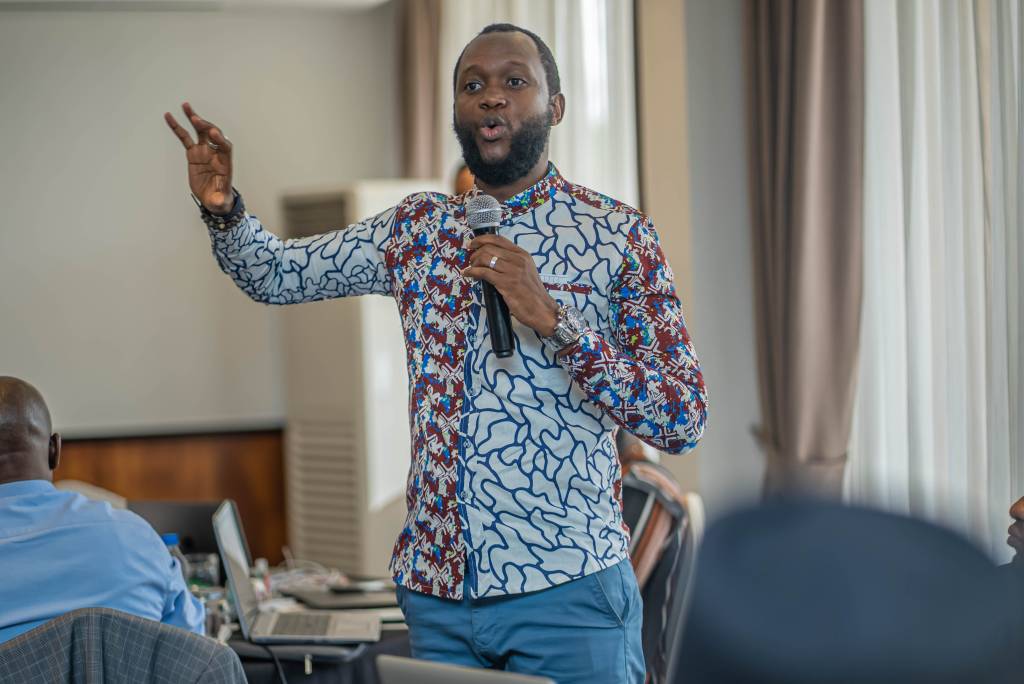
Newspage: The AMDC is mandated to coordinate implementation of the Africa Mining Vision (AMV), which seeks to leverage Africa’s natural resources sector for the continent’s socio-economic development. How far have you gone in achieving this quite strategic mandate?
Ncube: The push towards achieving AMV’s goals and tenets has been a long time coming. Now, we seem to be gaining some momentum, thanks to the African Minerals Governance Framework (AMGF) designed to deepen Member States’ commitment to implementing AMV by helping them assess their progress with regard to realizing the transformative ambitions of the Vision.
To this end, we carried out a five-country pilot assessment this year, beginning with Ghana for West Africa, Zambia for Southern Africa, Gabon for Central Africa, DRC for East Africa, and Morocco for North Africa. These assessments are more or less a microcosm of how Member States are uptaking the provisions of the AMV.
Based on the outcome of the assessment, I will say, although there are gaps and a few challenges here and there, in terms of the overall uptake, Member States are not only aware of the existence of the AMV but some of them are making great strides to align their mineral development policies with AMV.
Based on that, I believe as an institution that has since 2013 been working to support and provide guidance to Member States, we are moving at a good pace. Yet, we can do better. We need to move at a faster pace because things are changing at a much faster pace.
Newspage: Nigeria recently became the fourth country to ratify the AMDC statutes, following Guinea, Mali and Zambia. However, there are still 11 more countries that need to do so for the statutes to come into force. What are you doing to fast-track the ratification of the statutes by AU Member States, considering that, unless that is done, your capacity to function as an autonomous agency of the AU is pretty constrained?
Ncube: Indeed, you are absolutely right. We are aware of the fact that we could be doing more — we could be achieving more as AMDC. We could be driving bigger mandates as a centre. Certain factors are constraining us, not necessarily a lack of capacity, rather the fact that we are not fully autonomous. So, we ensure that at every one of our engagements — physical or virtual — we appeal to Member States to ratify the AMDC’s statutes.
Newspage: The Africa’s Green Minerals Strategy (AGMS) is a game changer for the continent’s mineral-based industrialization. However, it is still in draft form. What are you doing to ensure that it is finalized and fully implemented?
Ncube: To be honest, the strategy has been finalized, but it has not been fully adopted. We have to get it through the right AU organs and processes. The next session of the Specialized Technical Committee on Trade, Tourism, Industry and Minerals [it took place May 14–17], was the first of those organs to officially adopt the strategy.
However, in terms of implementation, it does not necessarily mean that, because the document has not been adopted, we cannot implement its provisions. A case in point is the DRC and Zambia Battery Initiative. It is a perfect example of the implementation of the AGMS. We have been involved in the DRC – Zambia initiative from its onset even as the strategy is not yet adopted within the organs.
Newspage: In July last year, you had the inaugural African Gemstones and Jewelry Exhibition and Conference (ACJEC) in Ndola, Zambia, to showcase Africa’s gemstones and maximize intra-African trade in African gemstones. How would the ACGS help formalize and regularize the Artisanal and Small-scale Mining (ASM) sector in Africa, which has lots of potential but, unfortunately, is largely informal?
Ncube: The Africa Gemstone Jewelry Exhibition and Conference (AGJEC) seeks to demonstrate that we can be consumers of our own gemstones. We want to standardize the production of jewelry and gemstones on the continent and create trading spots and markets for the products in every region of the continent. Ndola is designated as a trading spot for Southern Africa because of the quantity of gemstones available in Zambia, particularly Emeralds, Zambia being arguably the biggest producer of emeralds in the world.
This year, we are hosting AGJEC in Yaoundé, Cameroon. Yet, even last year, AGJEC Ndola was followed by AGJEC Lagos, Nigeria. There was another small yet privately run gemstone exhibition in Accra, Ghana. This year, we are going to start with AGJEC Accra, then AGJEC Ndola for Southern Africa, then AGJEC Yaoundé for Central Africa and hopefully AGJEC Cairo for North Africa. The idea is to create intra-African markets for the trade of locally produced gemstones.
We need to utilize the African Continental Free Trade Agreement (AfCFTA) to push for the professionalization, legalization and formalization of the ASM sector, since gemstones are mostly produced through artisanal mining. Gemstones are a good example of how artisanal and small-scale mining on the continent can be formalised through platforms like AGJEC. That is what AGJEC is all about.
Newspage: Now, despite being the most resource-abundant continent in the world, weak natural resource governance means African countries are largely unable to effectively harness these minerals for development. What is the AMDC doing to ensure the AMV and its action plan, as well as AGMS and all other policies help Africa benefit from its abundant and untapped natural resources?
Ncube: The five country-level assessments within the African Minerals Governance Framework (AMGF) I mentioned earlier were pilot studies. This year we are going to assess another five, if not 10, countries. The gaps to be found through these assessments will determine the necessary interventions to be carried out in each of the countries. These assessments expose the gaps that we are then ready at the behest of governments to assist in addressing them.
Basically, that is how we are dealing with mineral governance issues and trying to reverse the challenges associated with Africa’s mineral sector, or rather the so-called ‘mineral curse’, a terminology we do not like using because of its supernatural connotation. Actually, these are challenges we can genuinely handle ourselves. It has to be done step by step by first identifying the challenges.
Newspage: AMDC just concluded the East and Southern Africa Regional Consultative Workshop for a Continental Artisanal and Small-Scale Mining (ASM) Strategy. What is the potential of the ASM sector in advancing Africa’s ability to effectively harness its mineral resources?
Ncube: This strategy is meant to support the growth of our artisanal and small-scale miners but also the enterprises operating in the ASM sector. The idea is to support the growth of not just the miners, but the enterprises linked to them in a manner that is strategic and aligned to other continental development frameworks — the least of which is the AMV.
Therefore, the consultations towards developing the strategy are being held using a regional format. So, in Dar es Salaam, we targeted east and southern African countries, which incidentally is a perfect location because Tanzania belongs to both EAC and SADC. Then, we will do the West and Central Africa region’s consultations and finally, we will have the North Africa validation or forum at some point during the year.
The ASM sector is shrouded in negative narratives, yet the robust discussions at the workshop show the negative narratives are now being replaced by positive ones. Of course, we are yet to address all the negative issues around the ASM sector in Africa, yet people’s perspectives on it are changing. They now understand that it is not just a livelihood activity but also offers a significant opportunity to boost our economy if we approach it strategically, hence the continental strategy.
Editor’s Note: This interview has been edited for length and clarity

